Analysis
Somali-American Leader Sentenced to 17 Years for Role in $250M Feeding Our Future Fraud

Mukhtar Mohamed Shariff receives one of the harshest sentences in the largest COVID-19 pandemic fraud scheme in U.S. history.
Mukhtar Mohamed Shariff, a Somali-American leader and key player in the $250 million Feeding Our Future fraud, was sentenced to 17 and a half years in prison on Friday. The scheme, the largest pandemic-related fraud in U.S. history, siphoned federal funds intended to feed underprivileged children and redirected them toward luxury items, properties, and overseas investments.
The Fraudulent Scheme
Shariff, 34, served as CEO of Afrique Hospitality Group, a business used to funnel stolen funds from the Federal Child Nutrition Program. Prosecutors revealed that he submitted fraudulent claims for feeding up to 3,500 children daily at nonexistent sites, pocketing more than $1.3 million. Fake meal counts, invoices, and attendance records were submitted to claim reimbursements, while shell companies were used to launder the stolen money.
The fraud exploited emergency changes in the Federal Child Nutrition Program during the pandemic, which temporarily relaxed oversight to ensure children could access meals during school closures. Feeding Our Future, a nonprofit that sponsored sites like Shariff’s, facilitated the scheme in exchange for kickbacks.
Assistant U.S. Attorney Joe Thompson described the operation as “brazen,” stating, “Their scheme involved fake meals, fake kids, fake invoices—but very real money.”
Sentencing
Shariff was found guilty in June 2024 on charges of conspiracy to commit wire fraud, wire fraud, conspiracy to commit money laundering, and money laundering. U.S. District Judge Nancy E. Brasel handed down a 210-month sentence, which includes three years of supervised release and $48 million in restitution.
“When the world was at its most vulnerable, you were not a helper; you were a thief,” Judge Brasel said during the sentencing. She criticized Shariff’s “staggering lack of respect for the law” and cited his obstruction of justice, which included deleting communications on the Signal app and recording witness testimony during the trial.
Shariff apologized in court, tearfully acknowledging the damage his actions had done to his community, but his words did little to sway the judge. Supporters in the packed courtroom reacted emotionally, with one individual shouting, “No justice,” before being silenced.
Community Impact
The fraud case has tarnished public trust and damaged the reputation of Minnesota’s Somali-American community. Acting U.S. Attorney Lisa Kirkpatrick called the scheme a “brazen theft” of taxpayer funds intended to feed children, adding that it exploited both public generosity and pandemic-related vulnerabilities.
Community leaders worry that the scandal will exacerbate negative stereotypes about Somali-Americans. The case involves a total of 70 defendants, with investigations revealing systemic abuse of the Federal Child Nutrition Program.
Conclusion
Shariff’s sentencing sends a strong message about accountability in pandemic-era fraud cases. However, it also highlights broader concerns about the misuse of public funds and the reputational damage inflicted on vulnerable communities. As federal authorities continue to prosecute others involved in the scheme, the case serves as a cautionary tale of greed exploiting a global crisis.
Analysis
The Rise of Russia’s African Empire: Moscow’s March to the Atlantic
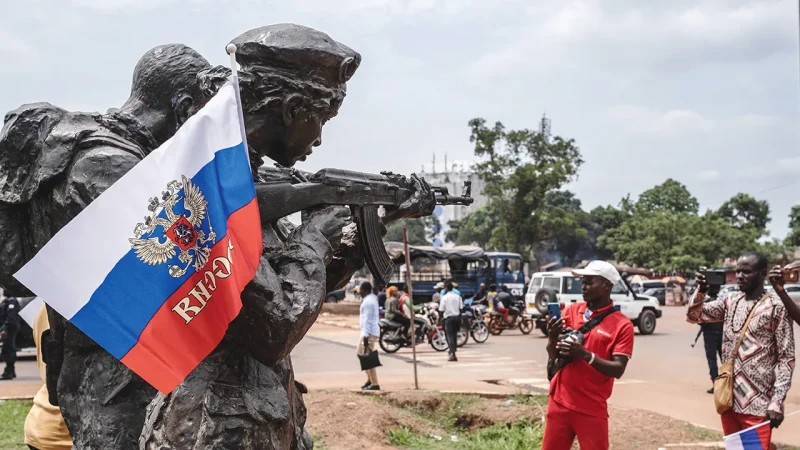
As the U.S. disengages, Russia entrenches itself in Africa — arming juntas, toppling Western influence, and redrawing the global map.
Russia isn’t just playing defense on Ukraine—it’s building an empire in Africa. From the Sahel to the Atlantic coast, Moscow is turning instability into strategy. What the West sees as chaos, the Kremlin sees as opportunity. And it’s capitalizing fast.
The Trump administration’s focus on Eastern Europe has left Africa dangerously exposed. While the U.S. exits Niger and France retreats from Mali, Burkina Faso, and Senegal, Russia is stepping in—with weapons, mercenaries, and deals. And make no mistake: this isn’t charity. This is conquest by proxy.
In Burkina Faso, Mali, and Niger—the heart of the new Alliance of Sahel States—military juntas backed by Moscow have severed ties with France and the U.S., forming a regional force under Russian guidance. With 5,000 troops poised to reshape the Sahel, Western-backed frameworks like G5 Sahel are being dismantled. In their place? Russian-dominated command centers and Wagner-led operations.
Wagner PMC, far from being a rogue outfit, is the Kremlin’s hand in Africa’s affairs. From diamond mines in the Central African Republic to military bases in Libya, it embeds deeply, restructures loyalties, and leaves Moscow with leverage. In many African capitals, Wagner is more influential than any ambassador.
But Putin’s ambitions don’t stop at the Sahel. Lavrov’s 2023 visit to Mauritania, a key Atlantic state, signals a coastal pivot. Russia wants the Atlantic flank—naval access, trade routes, and digital infrastructure. And it’s using soft power, narratives of anti-colonial solidarity, and military dependence to get there.
Washington is watching—but not reacting. As Trump pursues a Ukraine deal with Putin, the Kremlin is racking up wins in Africa. China and Iran are also in sync, forming a trilateral axis to counter Western influence in every sphere—military, digital, and ideological.
Bottom line: Africa is no longer a battlefield for hearts and minds—it’s now a staging ground for great power competition. Russia isn’t just back. It’s building a new empire, and if the U.S. doesn’t act, NATO will find its southern flank compromised not by bullets, but by silence.
Analysis
How Iran Is Using China to Hedge Against the U.S.

Iran-China Alliance Strengthens Amid U.S. Nuclear Talks — Beijing Becomes Tehran’s New Insurance Policy.
As Iran prepares for another round of indirect nuclear negotiations with the United States in Oman, it is simultaneously tightening its embrace with China — and not quietly. Tehran has declared 2025 a potential “golden year” in Iran-China relations. This is more than diplomatic flattery; it is a calculated hedge. Iran’s leadership is betting that Beijing will provide a geopolitical counterweight to Washington as the regime navigates unprecedented economic and political pressure.
Iranian Foreign Minister Abbas Araghchi’s trip to Beijing this week was not just another routine meeting. He called the talks with Chinese Foreign Minister Wang Yi “lengthy but highly significant,” covering everything from bilateral economic cooperation to the global ambitions of U.S. power. It’s clear that Tehran is not merely looking for trade — it’s looking for insurance. And China, locked in its own rivalry with Washington, is willing to provide it.
This partnership is built on mutual grievance: both nations denounce U.S. “hegemonic behavior” and seek to undermine the current Western-dominated order. Iran sees in China a lifeline — politically, economically, and diplomatically. With oil revenues still under sanctions and the U.S. pressuring its proxies across the region, Iran hopes that a powerful friend in Beijing will tilt the balance in its favor.
President Masoud Pezeshkian’s planned visits to China and Azerbaijan, alongside the upcoming Shanghai Cooperation Organization summit, signal a larger strategy: diversify alliances, elevate visibility, and escape the stranglehold of Western isolation.
But the stakes are high. If the nuclear talks with the U.S. collapse, Tehran will need China more than ever — for cash, technology, weapons, and legitimacy. If the talks succeed, Iran still wants China close, to resist future Western attempts to reimpose pressure.
Bottom line: Iran isn’t placing all its bets on Washington — it’s building a parallel track with Beijing. In a year filled with diplomatic maneuvering, Tehran hopes China will be more than a partner. It wants a patron. And 2025 may be the year it gets one.
Analysis
Franco-German Fireworks or Fragile Fantasy?
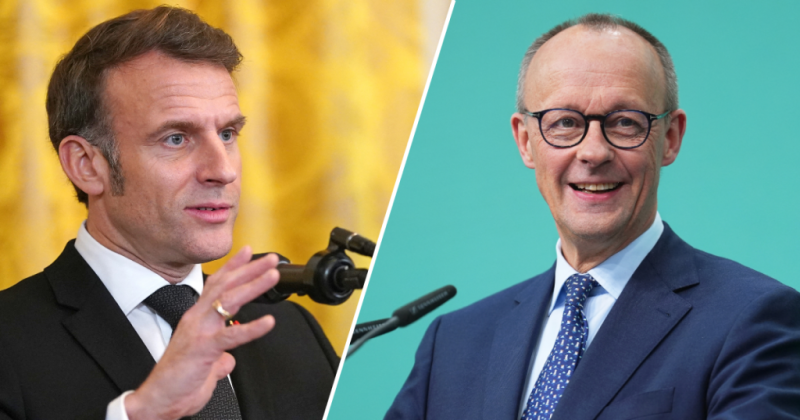
Merz and Macron ignite a new EU vision—but it’s built on shaky ground. Behind the public romance between France and Germany lies a storm of unresolved tensions. Can Merz and Macron truly redefine Europe, or is this just another act in Brussels’ endless theatre of delusion?

When Friedrich Merz chose Paris for his first foreign visit, pundits swooned. A conservative hawk from Berlin shaking hands with Emmanuel Macron—the Europhile poster boy—was heralded as the rebirth of the so-called Franco-German “engine” of Europe. But beyond the photo ops and flowery rhetoric lies a deeper truth: this new political marriage is laced with contradictions, mistrust, and strategic desperation.
Yes, Macron finally sees in Merz a partner who isn’t hypnotized by Washington’s shadow. Merz has echoed France’s call for “strategic autonomy” and even suggested that Europe must stop depending on the U.S. for its geopolitical security. That shift would be seismic—if it were sincere.
But Merz is no De Gaulle. He’s a fiscal hawk, backed by conservatives terrified of debt and allergic to the very kind of joint EU borrowing Macron sees as vital for defense investment. The idea of Eurobonds to boost EU arms production? Forget it. Merz’s lips may say “Oui,” but his parliament screams “Nein.”
On trade, the contradiction widens. Merz is obsessed with pushing through the Mercosur deal to save Germany’s export economy. Macron? He’s trapped between his neoliberal instincts and the rage of French farmers ready to torch the deal in protest. The only likely compromise? A cynical abstention, dressed up as diplomacy.
Then there’s energy. France wants subsidies for nuclear power. Germany wants hydrogen flowing from Spain. The pipeline project remains stalled. Defense projects, too—like the SCAF fighter jet—are bogged down by mistrust and national egos. For every handshake, there’s a hidden dagger.
The truth? This so-called “new chapter” is a crisis management romance, born of fear: fear of Trump’s return, fear of NATO decay, fear of China’s rise. But it’s not built on shared values. It’s built on shared panic.
So can the Franco-German engine power Europe’s future? Maybe. But only if both leaders stop playing games—and start confronting the deep fractures beneath the surface.
Until then, it’s not a honeymoon. It’s a photo op on borrowed time.
Analysis
Erdogan’s Horn of Africa Power Grab: Is the Turkish Military Winning Somalia’s Capital?

Turkey is waging a silent conquest in Mogadishu—with troops, drones, and oil deals—and Somalia’s president has already sold the keys.

In the name of “counterterrorism,” Turkey just staged a geopolitical takeover in Mogadishu. Two military planes, 500 soldiers, and more to come. But this isn’t just about Al-Shabaab—this is about Erdogan turning Somalia into a Turkish satellite state, and President Hassan Sheikh Mohamud is rolling out the red carpet.

The Turkish military is no joke. It’s NATO’s second-largest army, hardened by decades of insurgency warfare, equipped with German tanks, U.S. fighters, and its own lethal drone fleet. Their F-16s fly low while Bayraktar TB2 drones hunt targets—perfect for the urban warfare creeping into Mogadishu’s night.
But what’s terrifying is not just the firepower—it’s the strategy. Turkey isn’t just fighting Al-Shabaab, it’s occupying political space, installing its own contractors, oil firms, and trainers across Somalia. Somalia’s president isn’t leading a resistance—he’s hosting an auction.
Why is Hassan Sheikh letting it happen?

Simple: Erdogan found his puppet. PM Hamza’s Las Anod stunt was smoke and mirrors—a distraction while Ankara’s warships dock, oil deals are signed, and the Somali army becomes a Turkish proxy.
This is the quiet conquest of Mogadishu. The West has pumped in $20 billion in aid over two decades—and what’s left? Al-Shabaab controls Mogadishu after dark. And now, Turkey controls it by day.
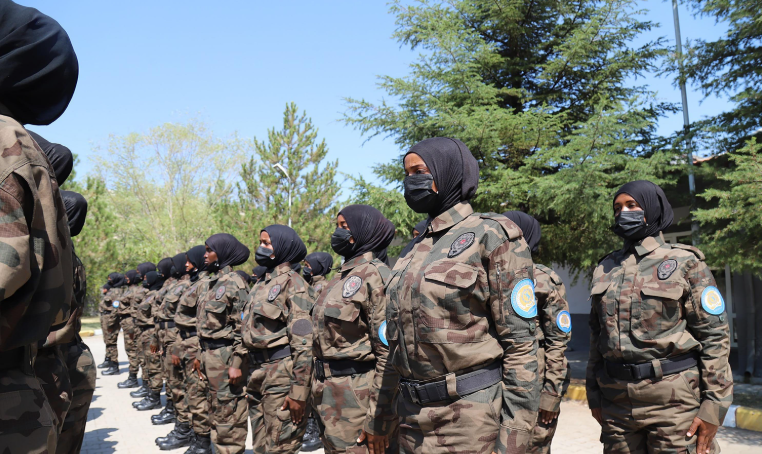
Turkish-trained female Somali commandos arrive in Mogadishu
The irony? While Trump talks business-first diplomacy, Erdogan is doing business with America’s enemies, grabbing oil fields in Somali territory that once belonged to U.S. firms. Turkish firms now guard U.S. diplomats in Somalia. Turkish warships circle the Red Sea. And Turkish drones rule the skies.
This isn’t a partnership. It’s a hostile takeover.

Somalia has been bought. Somaliland has been ignored. And if the U.S. doesn’t wake up, Erdogan’s Ottoman hustle will gut American influence from Africa to the Levant.
Time to name names. Time to cut ties. And time to back the real allies—those who don’t sell their sovereignty for drones and flags.
Analysis
Trump’s War on the World Order: A New Empire Rising

How Trump’s second term is torching the global rules and redrawing power lines—with chaos, calculation, and cold ambition.

Trump’s return has shattered the liberal international system the U.S. once built. This WARYATV analysis unpacks how his wrecking ball diplomacy is remaking the world—and why it could be dangerous or brilliant.
Trump isn’t just rewriting U.S. policy—he’s smashing the entire world order with a smile and a shrug. From NATO to the UN, from China tariffs to the Gaza evacuation plan, the second Trump presidency is burning the global script the U.S. once wrote. And here’s the twist: he’s not hiding it.
Forget liberal principles, multilateralism, or diplomacy. This is Art of the Deal: Planet Earth Edition. Trump’s worldview is simple—power respects power, and rules are for the weak. Whether he’s proposing to absorb Greenland or backing Russia’s land grabs, he’s restoring cynical realpolitik, the kind the West once swore it buried after World War II.
The old order was built on trust, institutions, and shared norms. But Trump saw the cracks—and now he’s kicking them wide open. His tariffs aren’t economic policy; they’re blunt-force tools to force loyalty and tribute. His budget cuts aren’t ideological; they’re designed to starve globalism and fuel nationalism.
And here’s the unsettling part:
It’s working.
China is bleeding from economic pressure. Europe is scrambling to adapt. African and Asian states are chasing new deals, desperate to avoid being left behind. Trump knows the UN is a relic, that Bretton Woods is obsolete, and that dominance—not diplomacy—is the new global currency.
Israel plays along, hoping to gain from the chaos. Netanyahu says nothing, knowing Trump might just hand him historic wins. But beneath the silence is fear—because when America breaks the world, no one is safe, not even its allies.
So is this the end of the post-WWII order? Maybe not. But Trump has already buried the illusion that it still runs the world.
This isn’t strategy—it’s demolition. And what rises from the rubble could reshape the century.
Analysis
From Cell to Summit: The Prisoner Who Became Syria’s President
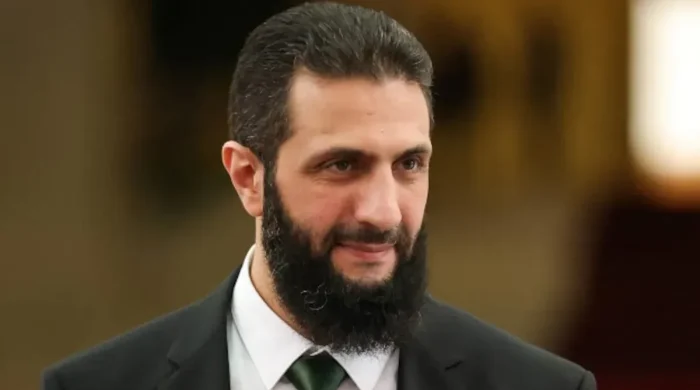
Ahmad al-Sharaa’s leaked prison past upends Syria’s new narrative—just as he prepares to sit at the Arab League table.
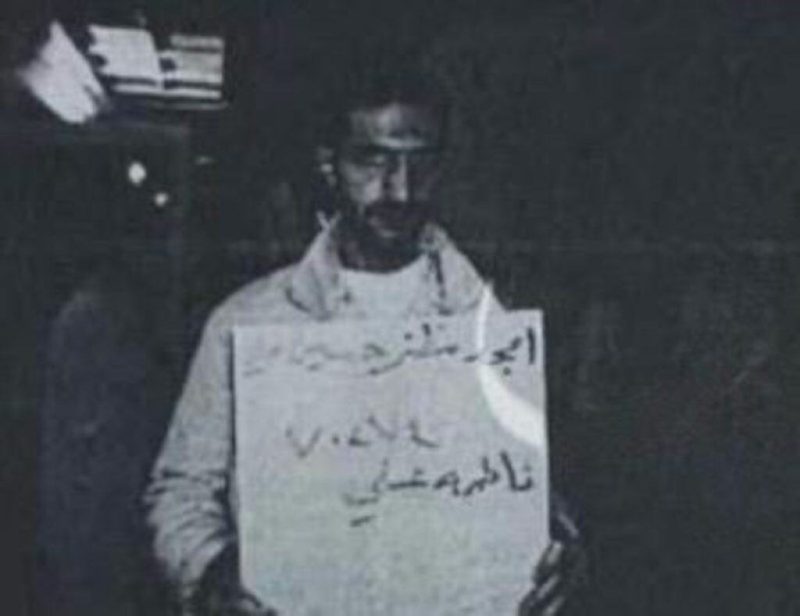
Leaked documents reveal Syria’s new president Ahmad al-Sharaa was once imprisoned in Iraq under a fake name. The story reshapes Syria’s post-Assad era.
The Syrian revolution’s most surprising twist just detonated across the Arab world: Ahmad al-Sharaa, the man now leading Syria’s transition after the collapse of Assad’s regime, was once a prisoner in Iraq—detained by the U.S. for six years under a false identity.
This revelation isn’t just a backstory—it’s a political earthquake. Documents independently verified show that al-Sharaa, under the alias Amjad Muzafar Hussein Al-Nuaimi, was arrested in 2005 and held at Taji prison until 2011. It wasn’t a mistake. It was strategy: fluent in a Mosul dialect and armed with forged papers, he evaded detection during the height of America’s war in Iraq.
That prison sentence forged more than just survival—it built a legend. Al-Sharaa returned to Syria in 2011 as the uprising began, aligned briefly with jihadist factions, including Al-Qaeda and ISIS, before launching his own faction: Hayat Tahrir al-Sham (HTS). By 2016, he had reinvented himself again—breaking with extremism and consolidating control over Idlib, Syria’s last opposition stronghold. In short, he didn’t just witness the Syrian conflict—he dominated it.
Now, just months after Damascus fell and Assad’s regime collapsed, this same man—once known only as Abu Muhammad al-Golani—is Syria’s interim president. He’s set to appear on May 17 at the Arab League summit in Baghdad, and the world will have to decide: is al-Sharaa a revolutionary hero, or a militant with a new mask?
Why does this leak matter now? Some suspect Iranian sabotage, others blame rivals inside Iraq. Either way, it exposes a narrative Syria’s new government hoped to bury. Al-Sharaa isn’t a clean-suited technocrat or a Western-trained reformer. He’s a battlefield survivor, molded by war, prison, and ideology.
For some, that’s exactly what Syria needs—a fighter who outlived Assad, the jihadists, and foreign occupations. For others, it’s proof that Syria’s future remains in the grip of men shaped by conflict, not consensus.
But one thing is clear: the war may have changed Syria’s map—but it never let go of its characters. From the shadows of a jail cell to the heights of Arab diplomacy, Ahmad al-Sharaa’s arc captures the volatile DNA of the new Syria.
Reshuffling the Middle East: Israel’s dilemma in the Syrian chaos
After Assad: Will Syria’s new leaders avoid the cycle of brutality?
Who is Asma Assad, the London-born wife of Syria’s deposed dictator?
Syria After Assad: Former prisoners speak of freedom and lingering pain
Iran and Turkey’s condemnation of Israel’s role in Syria: The battle for influence
Syria’s New Leadership: A Rising Force or Another Regional Rival?
Turkey’s Imminent Invasion into Syria Could Spark Regional Chaos
US Removes $10M Bounty on Leader of Rebel Group Now in Charge of Syria
Assad’s Relatives Detained at Beirut Airport Amid Syrian Regime Collapse
Russia’s Currency Airlift to Syria: A Power Play Against Western Sanctions
Russian Delegation Seeks to Secure Military Bases in Syria After Assad’s Fall
Syria Foils Islamic State Bomb Plot at Shiite Shrine Amid Sectarian Tensions
Assad’s Former Aide Claims Putin “Tricked” Deposed Syrian President During Final Days
Post-War Syria: Challenges Loom as Rebel Coalition Faces Uncertain Transition
The Retreat of Iranian Proxies in Syria and Its Broader Implications
Analysis
America Pulls the Plug on Somalia: UN Funding Blocked, AUSSOM on the Brink

Trump eyes embassy closures as US rejects UN plan to fund peacekeepers in Somalia — Mogadishu’s last lifeline in peril.

The US shocks the UN by rejecting funding for African Union forces in Somalia, just as Trump weighs closing the US Embassy in Mogadishu. With Al-Shabaab advancing and oil politics heating up, is Somalia doomed to implode?
The United States just signaled the collapse of Somalia’s last fragile security architecture — and it did so with chilling clarity. Washington has publicly rejected UN efforts to fund the African Union Stabilization Support Mission in Somalia (AUSSOM), effectively gutting any hope for predictable peacekeeping operations in a country teetering on the edge of collapse.

This isn’t just a bureaucratic snub — it’s a geopolitical death sentence for Somalia. Al-Shabaab militants are already testing the vacuum, launching a multi-pronged assault on Adan Yabaal, a key military base in Middle Shabelle. If confirmed, the town’s fall would mark the largest strategic loss since Somalia launched its offensive against terror in 2022.
UN Secretary-General António Guterres warned the Security Council: no funding, no peace. But the US—under Trump’s second-term posture—is slamming the door shut, labeling Somalia as unfit for a hybrid funding model under Resolution 2719. Diplomats are in a panic. Meanwhile, Trump is reportedly planning to close up to 30 diplomatic missions, with Mogadishu’s embassy topping the list.
Somalia’s response? Desperation disguised as diplomacy. The FGS is now peddling oil blocks in contested territories like Nugaal Valley. In a flashy announcement on X, Somalia’s ambassador to the US declared “Somalia is open for drilling,” targeting American firms with an offer it legally and militarily cannot secure.

Somalia’s Ambassador to the United States, Dahir Hassan Arab
The move comes after Somalia’s recognition of SSC-Khaatumo — a region still engulfed in the political wreckage of its war with Somaliland.
This isn’t about development. It’s about weaponizing recognition, resource manipulation, and fake sovereignty in a bid to win Trump’s favor and undermine Somaliland’s momentum.
But while Hargeisa builds forests and attracts foreign media praise, Mogadishu is drowning in debt, insurgency, and denial. The West is tuning out, and even the UN is losing patience. The US, once Somalia’s diplomatic oxygen, is now pulling the plug.
Somalia is not rising — it’s being unplugged.
Analysis
Somalia’s Egypt-Eritrea alliance is no anti-terror pact — it’s a Nile-fueled power play against Ethiopia

Proxy Firestorm in the Horn.

New Georgetown report warns: the Horn of Africa is on the brink of a regional war.
Somalia’s Gamble in the Horn.
As Ethiopia flirts with Somaliland recognition, Somalia deepens ties with Egypt and Eritrea—fueling a proxy showdown in the Horn of Africa. A new Georgetown report warns of a geopolitical powder keg.
TACTICS OR TROJAN HORSES? SOMALIA’S NEW ALLIANCES COULD IGNITE THE HORN
Somalia isn’t just shifting alliances — it’s detonating new frontlines. A new report from the Georgetown Journal of International Affairs tears the veil off Mogadishu’s widening web of military deals and exposes a regional arms race that’s dragging Egypt, Ethiopia, Turkey, and Eritrea into what could become Africa’s next great conflict.
The flashpoint? Somaliland. The January 2024 port access deal between Somaliland and Ethiopia, in which Ethiopia would gain maritime rights in exchange for recognition, has shattered old assumptions. Furious, Somalia raced into the arms of Egypt and Eritrea — two states that already view Ethiopia as a regional nemesis. Egypt’s military cargo to Somalia in early 2025 wasn’t about fighting Al-Shabab — it was about squeezing Ethiopia over the Nile.
The report warns: peacekeeping missions like AUSSOM are no longer neutral. They’re being manipulated by rival states to project hard power under soft banners. With Ethiopia’s troops still embedded in Somalia’s stabilization efforts, the stage is set for internal sabotage masquerading as peace.
Mogadishu’s sudden outreach to Azerbaijan and Turkey further muddies the waters. The UAE, Russia, and China are already entrenched through ports and military outposts, turning Somalia into the ultimate battlefield for global influence.
Forget diplomacy — this is geopolitical brinkmanship at its rawest. The Horn of Africa is becoming a chessboard of oil, access, and arms, and Somalia just moved its queen into check.
WARYATV.COM | FRONTLINE ANALYSIS
-

 Analysis2 months ago
Analysis2 months agoSaudi Arabia’s Billion-Dollar Bid for Eritrea’s Assab Port
-

 ASSESSMENTS3 weeks ago
ASSESSMENTS3 weeks agoOperation Geel Exposes the Truth: International Community’s Reluctance to Embrace Somaliland as a Strategic Ally
-

 Somaliland3 months ago
Somaliland3 months agoSomaliland and UAE Elevate Ties to Comprehensive Strategic Partnership
-

 Africa1 year ago
Africa1 year agoHow Somaliland Could Lead the Global Camel Milk Industry
-

 Analysis1 year ago
Analysis1 year agoIran escalates conflict, attacking Israel; US forces help Israel to intercept Iranian projectiles
-

 Top stories11 months ago
Top stories11 months agoGunmen Kill 11 in Southeastern Nigeria Attack, Army Reports
-

 Analysis1 year ago
Analysis1 year agoIsrael and Iran on Edge: Tensions Escalate Amidst Rising Threats
-

 TECH11 months ago
TECH11 months agoZimbabwe Approves Licensing of Musk’s Starlink Internet Service



























